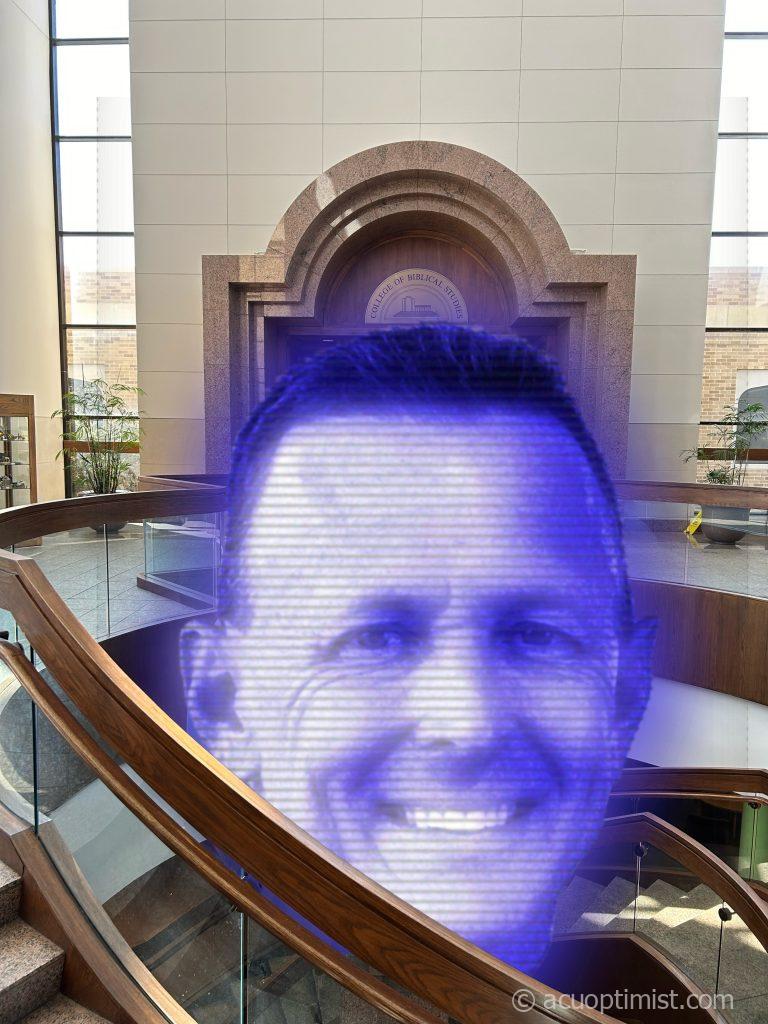With renovations at Sikes Hall – soon to be the new Mabee Hall – on schedule, and with a half dozen other campus construction projects complete, the university is slated to take a building breather. But not before it tackles one facilities issue – a global one in the Onstead-Packer Biblical Studies Building.
Those with a keen eye will detect some Cold War era anachronisms in the 1989 structure, specifically on the sphere at the center of the atrium outside the Chapel on the Hill. Just months after the World Missions Globe was placed on its axis 35 years ago, it became obsolete with the 1990 unification of North and South Yemen into a single country. Then the fall of the Berlin Wall later that year led to a reunion of East and West Germany into a single Deutschland.
When Dr. Royce Money was inaugurated in 1991 as tenth president of the university, he planned to make his first act the correction of the globe.
“I had my Magic Markers and my ladder all ready,” Money says. “Then the Soviet Bloc fell apart. So I said, ‘Just forget it!’”
The fall of the Soviet Union led to the spin-off from the Soviet Union of Uzbekistan, Turkmenistan, Tajikistan and a dozen other countries, with only Russia remaining.
And the campus world map has grown only more inaccurate ever since.
Kevin Campbell, senior vice president for operations, admitted he never noticed the goofs on the globe until someone pointed it out recently.
“Don’t blame me,” Campbell said. “That’s how everything looked when I took geography in seventh grade. And if it was good enough for Mrs. Crawford at Grapevine Middle School, it was good enough for me.”
But Campbell now has come up with a novel idea to fix the terrestrial trouble. Working with students in the School of Information and Technology, the university plans to replace the globe over the summer with a giant holographic depiction of the head of Dr. Phil Schubert, 11th president of the university.
“I think it’s a great idea!” Schubert said. “My mother always said I had a good head on my shoulders… But she also said, ‘Don’t get a big head.’ So I guess that’s something to think about…”
The holographic Onstead-Packer Memorial Schubert Head will rotate on the same axis as the World Missions Globe, but it will be able to recite interesting facts about the history of the university and to shout “Go Wildcats!” whenever anyone enters the atrium. And student programmers hope to use artificial intelligence to program the head to answer visitor questions similar to how Schubert himself would answer them.
“The best part about it is because it’s holographic, we can update it at any time, unlike the World Missions Globe,” Campbell says. “So when Dr. Schubert’s bald spot grows, the hologram’s can, too.”
“Bald spot! What bald spot?!” Schubert said.
The changes also will give the university the opportunity to do something with the hundreds of feet of chain link fencing that has surrounded construction at Wessel Hall, Bullock Hall, the Boone Family Theatre and other construction sites for the past several years.
For the time being, the fencing will be installed to encircle the Bible building. And to avoid confusion and ensure no one expects major additions to that building – just the removal of the globe and installation of the Schubert head, the existing signs will be altered slightly to read “(DE)CONSTRUCTION ZONE.”

